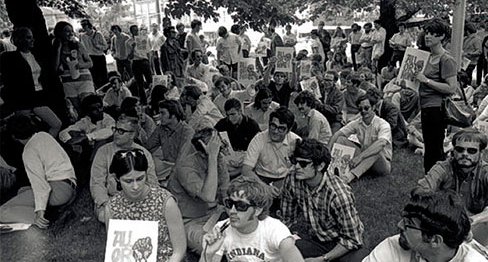Author
Educator
My work is focused on solutions to help students, educators and their institutions to thrive, not just survive.

The views expressed herein are my own and do not represent the opinions of any institution or entity with whom I work.

Crystal balls seem to be in short supply these days. Every day is filled with the unexpected and then the following day offers up even more surprises (not all of them good). When pollsters get things all so wrong, making a prediction for the world of education in 2017 is like walking down a street filled with potholes (of which there are many). Stated simply, it is easy to stumble.
That all said, here is my prediction — and what is perhaps more important than what I offer up here is a discussion of how folks within and outside inside institutions will respond if the prediction proves right. In other words, with the prediction comes a reaction and response that is needed — and, therein lies the deeper and more complex challenge. And, I hope LINKEDIN will circle back in 2018 and see how well the predictions panned out.
So, here it is: I predict that
higher education campuses across the nation will be the loci of protests, marches and “ruckus,” with students (including student athletes) leading the charge in support of a nation that treats all people — regardless of age, race, gender, ethnicity, economic status, country of origin and social standing — with respect and dignity. And the result of these efforts will be felt by educational institutions, businesses, law enforcement and governments near and far, many of which will be forced to at least hear the student voices.
It is not hard to picture what will trigger the protests (and 2016 has already experienced its fair share). A change in the government position on immigration that leads to students or others being deported (or their family members being deported), a nomination to the Supreme Court who has longstanding views on pro-life and pro-guns and pro-death penalty, a cabinet appointee who acts badly by sleeping with someone way too young or way too vulnerable, a President who regularly co-mingles personal business opportunities with the sacred charge to protect our nation, a terrorist attack in our nation in a city or at a school or at some athletic event — these will all produce protests.
And, there are less “dramatic” triggers — indeed, I think many of us have hair triggers at the moment: offensive rhetoric in the past or present that evidences poor judgment; discriminatory beliefs and a disregard for human dignity; a professor (more than one?) who is unable to deal with trigger warnings and for whom discussion of inflammatory topics with inflammatory comments in class become uncontrollable; online and on campus comments, chalking and graffiti; athletes who fail to stand for anthems or refuse to put their hand over their hearts.
The presence of protests is, at least for me, positive. It is what democracy encourages and enables. It is the price of freedom, as long as the protests are well-thought out, well planned and non-violent. They can be active and create disruption like street closings and building blockages. But, the protests cannot injure others — intentionally or due to stampedes or through other unexpected pathways to harm.
It’s how we respond to the protests that matters — it matters a lot. If we reflect back on the 60’s and the Civil Rights era and the Chicago Convention riots, we had way too much violence for my taste (even if necessary on the part of protesters). Cops seemed to clamp down hard on students. There were some college administrators who did not do much better. One climbed out his his barricaded office through a window (soon to be an ex-administrator to be sure). More recent protests have not exactly demonstrated the empathy engine of college administrators or police. Look at the Mizzou (now ex) president who would not leave his car to meet with protesters. And then there was the House Master whose body language loudly messaged his internal anger.
There were and are college leaders and police who could and do use a softer touch — one that is likely to lead to less violence and greater resolution of the issues. How about the President who brought in pizza for the protesters? How about the President who literally went to the protestors for a meeting (instead of the protestors coming to the president’s office)? How about the President who joined the protest? And how about the police who seem to be able to de-escalate situations — curbing violence, avoiding bully sticks and tear gas?
As I was driving over Thanksgiving week-end (something to be avoided at all costs prospectively), I saw many cop cars awaiting their next victim or having already pulled someone over. I get it — speeding kills. I wondered: what if instead of a ticket, they gave the wrongdoer a turkey or an apple pie and said: “Please drive carefully; people care about you.” My guess: people would drive slower and the impact of the turkey/pie would reach far beyond and last far longer than the ticket and points on the license. I can hear many a family sharing the story over the holiday dinner — year after year.
That example is my hope for the institutional, community, alum, business and police response to student protesters in the coming year. I think my prediction of protesters is accurate. I am less confident in predicting quality listening and empathetic behavior by the non-protestors. Too bad.
This article is part of the LinkedIn Top Voices list, a collection of the must-read writers of the year. Check out more #BigIdeas2017 here.